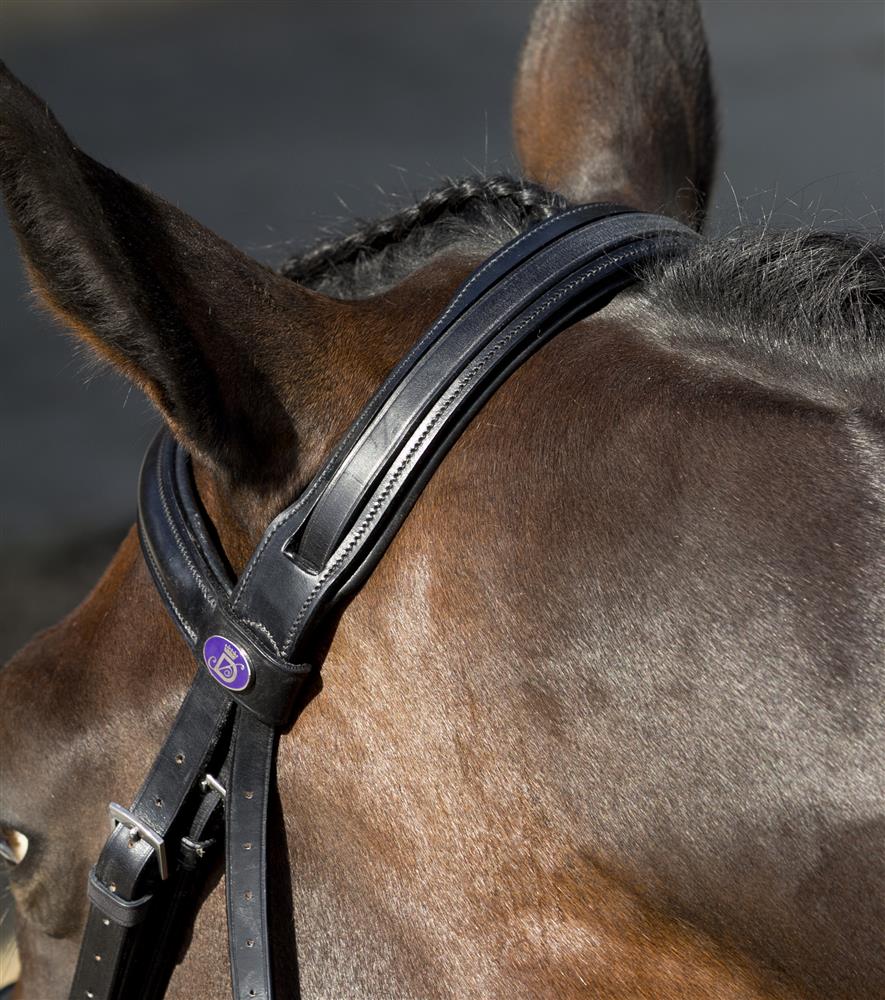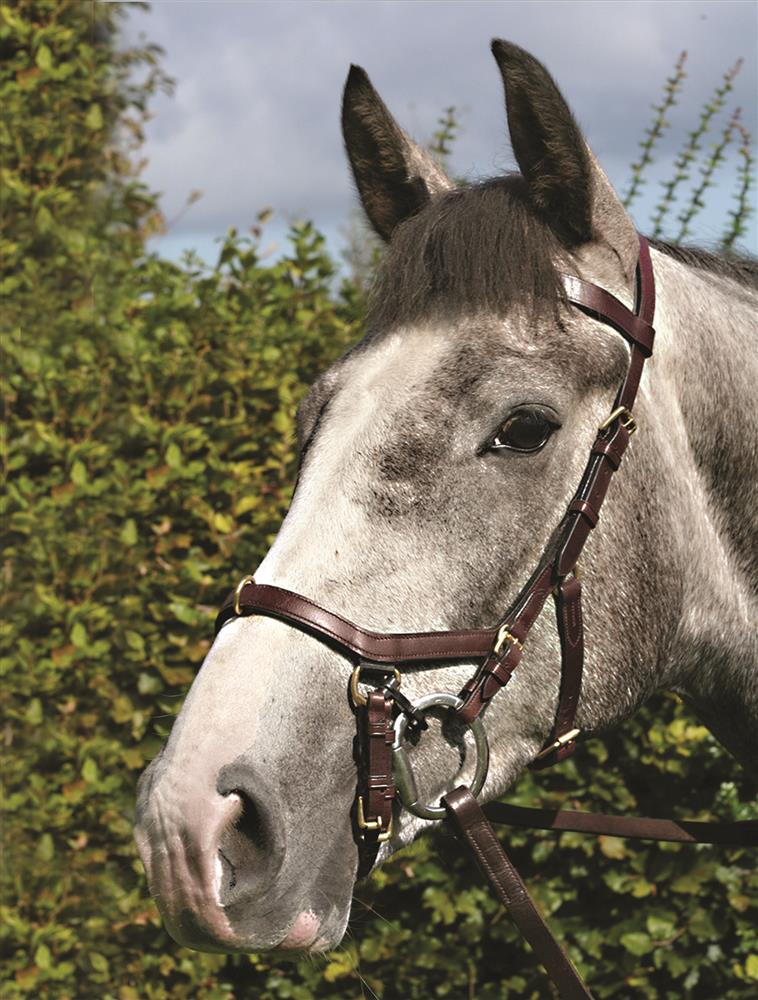Most riders do everything they can to ensure that their horses are happy and comfortable, so the announcement that British Dressage is cracking down on too-tight nosebands will be welcomed.
We’ve all seen pictures of horses whose mouths have been strapped shut so tightly they can’t relax their jaws. As a horse can’t work forward on to the bit without relaxing his jaw, that’s a no-brainer in terms of performance as well as causing distress and even pain.
But beyond this issue, which has caused heated debate, lies a wider point. It doesn’t take rocket science to prove that anything you use on or give to a horse, whether it’s a bridle or a feed supplement, can only do good if it is used for a purpose and used correctly. If it isn’t, it will be at best, ineffective and at worst, abuse.

A well-fitting browband which isn't pinching the ears.
Image credit: Dressage Deluxe.
Those of us who have owned horses for donkeys’ years or who compete at high level can’t assume that we always get it right. I recently heard a practical and thoughtful dressage trainer say that many of his clients still judge the height of a bit by how many wrinkles appear at the sides of the horse’s mouth, rather than looking inside the horse’s mouth to see where the mouthpiece lies.
First-time buyers or those trying to cut costs often respond to adverts asking if a horse or pony is being sold with tack. That can be a great way of staying within your budget, as long as the tack fits correctly to start with. If it doesn’t, you either perpetuate a problem or end up with tack you don’t want, and the expense of finding some that fits.
Sometimes, it’s simply a case of making sure that assumptions are accurate. Manufacturers can offer guidelines, but if you don’t know how much your horse or pony weighs and rely on guesswork, you don’t have a baseline for working out how much feed, supplement, or – when appropriate – wormer he needs. Fortunately, wormers can no longer be bought in the UK without appropriate checks being made, but there are still owners who get around them.
Fashion has a lot to answer for, too. Why do so many riders use Flash nosebands as standard on snaffle bridles? Of course they can be useful when designed and fitted correctly, but some horses go better without a drop strap and their riders never actually find out.
Next time you’re at a show, look at how many riders use Flash nosebands that are so flimsy, the whole thing is dragged down the horse’s face so the drop strap rests halfway across the horse’s mouth. The rider often attempts to rectify this by tightening the noseband, which goes back to where we came in.
It’s usually too simplistic to say that we should “always” or “never” use certain equipment and it’s always fascinating when well-known riders and trainers say why they’ve changed their approach. Full marks, too, to those who have re-designed traditional equipment to make it more comfortable for the horse. I like the Micklem bridle, designed by hugely respected trainer William Micklem, but it can only be comfortable for the horse if you follow the fitting guidelines carefully.

A Micklem bridle.
It can be difficult when we’re swamped with views and information. But if we think first, monitor our horses constantly and base what we do on knowledge rather than fashion, we and our horses will be better off.
